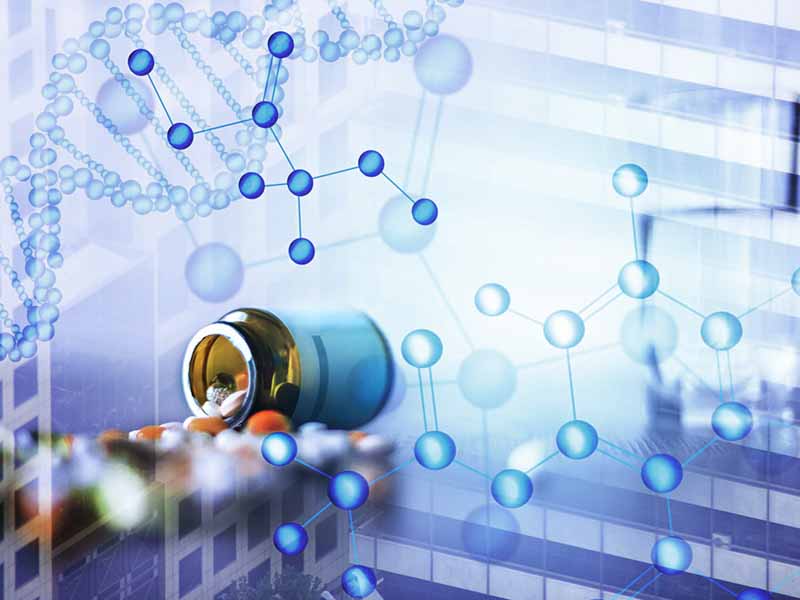Water for injection is the raw and auxiliary material for the preparation of many medicines. The water for injection will enter the human body along with the medicine. If its quality is not up to standard, it will pose a threat to the health of patients, which reflects the importance of water for injection in biopharmaceuticals. According to the practical experience of water for injection system in biopharmaceuticals, it is analyzed and illustrated with examples, in order to serve as a reference for the design and use of water for injection system.

Part 1 Water Quality Standards For Injection
Chinese Pharmacopoeia’s water quality indicators for injection water: water for injection is purified water distilled water, conductivity < 1.3us/cm at 25°C; microbial limit ≤ 10CFU/100ml; bacterial endomycin < 0.25EU/mL; pH Control at 5.0~7.0; various oxides, sulfates, calcium salts, etc. need to be tested according to national standards, nitrate < 0.06μg/mL heavy metal < 0.1μg/mL; non-volatile matter ≤ 10mg/L.
In-place cleaning and in-place sterilization facilities are installed in the water for injection storage tank and delivery system to ensure that the quality of cleaning and disinfection meets the requirements.
Part 2 Water Injection System Design In Biopharmaceuticals
The design of the injection water system mainly includes six aspects: preparation system, storage, water pump determination, distribution pipeline, sterilization, and point of use.
2.1 Design Of Water For Injection Preparation System
Distillation method: The distillation method is based on phase change, so that the water quality of the water for injection prepared in this way is stable. At the same time, the distillation process is also a disinfection and sterilization process, so the distillation method is the first choice for the preparation of water for injection in all countries in the world.
Reverse osmosis: The United States Pharmacopoeia has listed reverse osmosis as one of the legal production methods of water for injection since the 19th edition. The disadvantage of the reverse osmosis method is that: because the reverse osmosis device operates at normal temperature, it does not have reliable anti-microbial pollution ability, and the stability of water quality is not as good as that of the distillation method.
In the “Chinese Pharmacopoeia”, it is clearly stipulated: “The preparation of water for injection should use purified water as the water source, and should be prepared by distillation.” Therefore, the distillation method is usually used in China to prepare water for injection.
2.2 Storage Design
Storage is an important part of the system, which needs to be guaranteed for its safety, sanitation, ease of cleaning, and cleanliness, etc., and its pressure level needs to meet the actual system equipment application requirements.
(1) Storage Tank And Supporting Accessories
The water for injection storage tank should be made of low-carbon high-quality stainless steel, such as 316L, and the liquid level measurement device should use an electric signal liquid level control device. The sensor should consider the hygiene requirements and the tolerance of extreme temperature and pressure (during sterilization) in the tank, and set High and low liquid level alarm system.
A 0.22μm hydrophobic breather filter should be installed on the top of the water for injection storage tank, and the material is generally polytetrafluoroethylene (PTFE) or polyvinylidene fluoride (PVDF). At the same time, in order to avoid the formation of water film on the surface of the hydrophobic filter element of the air filter, the stainless steel shell of the breather filter of the water for injection storage tank should be heated by electricity or steam, so that the temperature of the filter is slightly higher than the water temperature in the tank.
(2) Storage Temperature
In general, the design of the storage tank in the water for injection system needs to ensure that the storage temperature of the water for injection is controlled above 80°C or below 4°C, and it is in a state of continuous heat preservation. If the temperature is above 70°C, the heat preservation cycle of the water for injection should be ensured. The size of the capacity is the main content in the design of the water for injection storage tank. The key points are the continuous cycle operation, the height of the liquid level can meet the suction requirements of the injection liquid, and the capacity of the stored water for injection can meet the demand for a period of time and the amount of circulating water. Require.
2.3 Pump Design
In the pump design of the water injection system, attention should be paid to the two key points of sanitation and easy disassembly. The pump casing and open impeller should take into account factors such as emptying and cleaning. The materials of the pump body and impeller are 316L. When determining the angle of the water pump, the outlet angle is generally controlled at about 45°, which can reduce the probability of air entering the water pump and ensure the normal operation of the water pump in the water for injection system. In addition, in order to avoid waste of energy consumption during the operation of water pumps in the water injection system, frequency conversion pumps should be selected, and standby pumps are generally not used.
2.4 Distribution Pipeline Design
The distribution pipeline of the water for injection system needs to ensure its stable turbulent flow state, and its flowing water is controlled at 1~3m/s. The design of the slope needs to ensure that all the water in the water for injection system can be discharged, and the pipe fittings cannot be selected blindly. The valves and diameters need to be selected strictly according to actual needs. The selection of horizontal pipelines and valves requires careful consideration. Generally, eccentric variable-diameter sanitary diaphragm valves are used to improve the distribution pipeline of the water for injection system. rationality.
2.5 Sterilization Design
Pure steam pressure sterilization is currently a more commonly used method for sterilizing water for injection systems. The pressure needs to be controlled at 0.1~0.3MPa. The time for the system to sterilize water for injection needs to be properly controlled, generally not less than 1h. In addition, in the actual use of the superheated water for injection sterilization method, the temperature needs to be controlled at 121°C. When the specified temperature is reached, the water quality is sterilized and disinfected through the circulation system in the system, which is different from the pure steam pressure sterilization method. The same is that the sterilization time should not be less than 1h.
2.6 Point Of Use Design
User requirements are the most basic design basis, especially the water volume, water temperature and water pressure requirements of each point of use at each time period, which is the basis for calculation and selection of components in the entire water system. For example, process tank liquid preparation and CIP cleaning have different requirements for water volume, water temperature, and water pressure, and the time periods of the two operations are also different. Reasonable allocation of use points in the loop can reduce a lot of operating costs for enterprises. Therefore, the allocation of use points should be discussed and confirmed with the use department, and a process flow chart should be formed accordingly.
Part 3 Establishment Of Guarantee System
In order to ensure that the water quality of water for injection complies with the relevant national standards, it is necessary to comprehensively manage the water for injection system from the aspects of hardware design, equipment and pipeline installation, verification and operation management, etc., establish a complete water for injection system management guarantee system, rationally arrange and finely design , to make a reasonable plan for the three elements involved in the hardware, software and personnel. Reasonable design, careful construction, strict verification, standard operation, effective monitoring and timely maintenance of hardware must be supported by relevant software, and the implementation status will be reflected in the operation records. The management and maintenance system can produce qualified water for injection. It must be systematic, applicable, dynamic and traceable, all of which are indispensable; and qualified hardware facilities can only reflect their due quality only when personnel with certain qualities operate and manage them in strict accordance with relevant software requirements. Only by using the advantages can we produce qualified water for injection.
Part 4 Example
4.1 Equipment Selection
Take the injection water system of a new virus vaccine workshop of a biological products limited liability company as an example.
(1) Purified water unit: first-class RO+EDI, purified water output is 15m3/h, and the purified water produced is used as purified water for workshop process and raw water for injection water.

(2) Distiller: 5m3/h multi-effect distilled water machine.
(3) Water for injection storage tanks: two 10m3 stainless steel storage tanks made of 316L.
(4) Conveyor pump: Two sets of hot water type variable frequency conveying pumps with self-contained discharge ports, one with a flow rate of 17m3/h and a lift of 85m; the other with a flow rate of 7m3/h and a lift of 50m.
4.2 Delivery And Distribution System
Take the injection water system of a newly expanded blood product workshop of a biological products limited liability company as an example. The original blood product workshop of this project already had a distilled water machine and a pipeline system for water for injection. The newly expanded blood product workshop is adjacent to the original workshop, and the water for injection system relies on the equipment of the original workshop. The principle of not affecting the production of the original workshop as far as possible, after calculation, the transformation method of water for injection distribution is as follows: add a water for injection storage tank in the new workshop, and the water for injection in the storage tank comes from the water for injection system of the original workshop (extending the original water for injection Pipelines are connected to the new workshop, and a water for injection use point is added to enter the water for injection storage tank). The distribution system of the water for injection system in the new workshop starts from the storage tank. According to the aforementioned points, the performance confirmation and verification of the entire water for injection system is carried out, including sampling frequency, testing methods, qualification standards, verification data traceability, etc.
Part 5 Conclusion
Combining the above, we can see that in the biopharmaceutical industry, water for injection is widely used, and the water for injection system is the guarantee for the safe storage and use of water for injection, which requires sufficient attention from relevant personnel. The design of the water for injection system is difficult and requires the designer to consider all aspects, not only to ensure the use of water for injection by the relevant personnel of the pharmaceutical company, but also to ensure the safety of the water for injection, to avoid the water for injection being stored in the system or It is affected by adverse factors during transportation. In order to effectively guarantee the quality of the water for injection system, relevant personnel need to fully understand the latest standards for the quality of water for injection, and learn advanced technology of the water for injection system, so as to improve the quality of the water for injection system and promote the development of my country’s biopharmaceutical industry.










